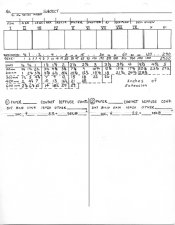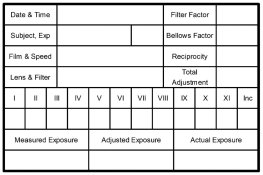bobwysiwyg
Subscriber
I was hoping someone here might be able to explain some of the content on this record sheet. I, and other class members, were given it many years ago in a local photo class, aimed primarily at printing. At the time I was entirely into 35mm so much of the sheet content seemed not to be relevant. With my efforts to learn my 4x5, perhaps it now has some meaning and usefulness.
The upper part seems related to the zone system. It is the middle part that I'm having trouble deciphering, where there are listed focal lengths and extensions. I'm assuming this is related to additional exposure times for the extensions??
Anyway, any input would be appreciated.
The upper part seems related to the zone system. It is the middle part that I'm having trouble deciphering, where there are listed focal lengths and extensions. I'm assuming this is related to additional exposure times for the extensions??
Anyway, any input would be appreciated.






